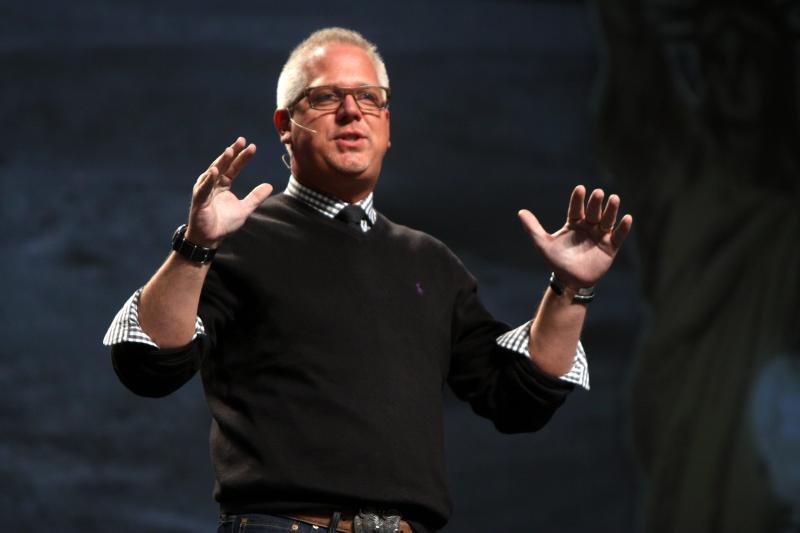I could write a “Say What?” blog post about Glenn Beck’s recent rant about the imminent danger of newly airborne Ebola being brought to America by Nigerian prison guards.  But writing “Say What?” columns about the ways Glenn Beck gets science wrong just doesn’t seem worthwhile—it would be like saying Star Wars isn’t credible because no one would ever wear those big ear buns like Princess Leia. True, but perhaps not the least credible thing about Star Wars.
But writing “Say What?” columns about the ways Glenn Beck gets science wrong just doesn’t seem worthwhile—it would be like saying Star Wars isn’t credible because no one would ever wear those big ear buns like Princess Leia. True, but perhaps not the least credible thing about Star Wars.
Similarly, I could write a “Say What?” about the New York Times editorial by Michael Osterholm of the University of Minnesota that enabled Beck to claim that his rant was based on an expert’s opinion. In his piece, Osterholm purports to reveal something that “virologists are loath to discuss openly but are definitely considering in private: that an Ebola virus could mutate to become transmissible through the air.” In the true spirit of conspiracy mentality, which virologists are discussing this in private, and how likely they think it is, goes unsaid, leaving the impression that a legitimate danger is being hidden from the public.
I was relieved to find that someone has already done an excellent job responding to Osterholm’s fevered speculation with some fine evolutionary reasoning. Thus, I am saved from writing a “Say What?” and can instead award a “Well Said!”—a much more pleasant thing do to. The accolade-earning article is “Fact or Fiction: The Ebola Virus Will Go Airborne” by Dina Fine Maron, associate editor at Scientific American. Maron does a fantastic job of dismantling Osterholm’s claim and Beck’s bombast by explaining why basic evolutionary principles suggest that Ebola is extremely unlikely to evolve the capacity to spread via the respiratory route.
Maron quotes from her interview with Dr. William Shaffner, Chairman of the Department of Preventive Medicine at Vanderbilt University, in which Dr. Shaffner points out that (at least) two conditions would have to be met for Ebola to begin to spread by air.
First, to spread from person to person by air, the virus would have to be capable of infecting the epithelial cells lining the throat, windpipe, or lungs. Viruses have surface proteins that can interact with receptors on host cells. Think of it as a lock and key: if they match up, the “door” opens, and the virus gets in. This protein-receptor relationship is very specific, so viruses cannot infect any old cell, they can only infect  cells that have “locks” that match their “keys.” Once inside the host cell, the virus takes over the cell’s machinery to replicate (viruses cannot replicate on their own, they need a host cell). The fact that not all cell interiors are identical represents another challenge to a target-cell-switching virus.
cells that have “locks” that match their “keys.” Once inside the host cell, the virus takes over the cell’s machinery to replicate (viruses cannot replicate on their own, they need a host cell). The fact that not all cell interiors are identical represents another challenge to a target-cell-switching virus.
The epithelial cells of the upper respiratory system lack a receptor that can be used by Ebola to sneak in, and therefore are very good at keeping Ebola out. So, even if someone were to inhale an Ebola virus, it would have no target cell in the throat to invade, hijack, and replicate in. That means it would be very unlikely to spread to a third person—the second condition Ebola would have to meet in order to spread by air. In other words, Ebola is very good at getting into immune system cells…respiratory cells? Not so much.
But couldn’t the viruses evolve a mutation that enabled it to invade a respiratory cell? After all, viruses—including Ebola—tend to have very high mutation rates. Despite this genetic variability, as Dr. Shaffner goes on to explain, viruses very rarely develop the mutations to switch host cells, and so far, Ebola and its close viral relatives, have shown no indication that they are mutating in that way. And Ebola expert Dr. Thomas Geisbert explains that while the risk for Ebola to accumulate a series of mutations that would allow it to spread by air is “probably not zero,” there is, in fact, no evolutionary selective pressure on it to do so.
Medical and public health professionals know what is necessary to stop the Ebola outbreak, and the answer is greater resources—more healthcare workers with adequate personal protective gear, and more adequately equipped facilities to care for the sick, dispose of infectious waste, and safely handle the bodies of the dead. In Dr. Schaffner’s words: “We have so many problems with Ebola, let’s not make another one that, of course, is theoretically possible but is pretty way down on the list of likely issues.”
So for defusing this ill-founded concern with sound evolutionary reasoning, to Ms Maron and Dr. Shaffner I say “Well Said!”
Photo credits:
Glenn Beck photo: Gage Skidmore
Virus chart: Haggstrom, Mikael. "Medical gallery of Mikael Haagstrom 2014". Wikiversity Journal of Medicine 1 (2). DOI:10.15347/wjm/2014.008.ISSN 20018762.

